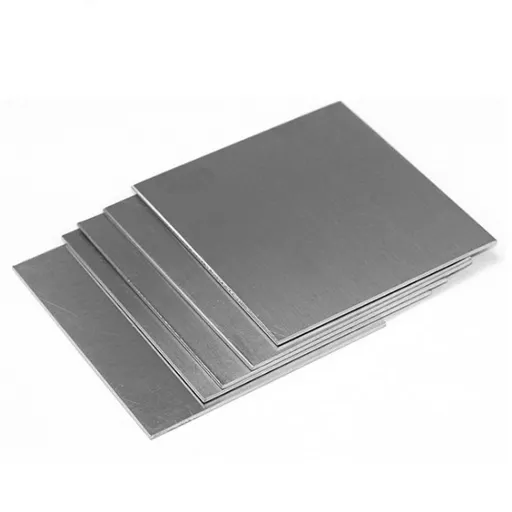Nickel alloy plates and sheets have become necessary in various sectors because of their unrivaled strength, durability, and resistance to extreme conditions. These materials are very adaptable and thus give a range of solutions that are not limited to traditional metals in the case of aerospace, chemical processing, or marine engineering. The unique characteristics of nickel alloys, their different applications, and the reason they are the first option in difficult environments will be presented in this blog post. By the time you finish reading, you will have a precise picture of how nickel alloy plates and sheets can boost the efficiency and dependability of your projects. Let’s take a look at metal and steel solutions that are tailored for the industry’s tough requirements.
The Introduction of Nickel Alloy Plates
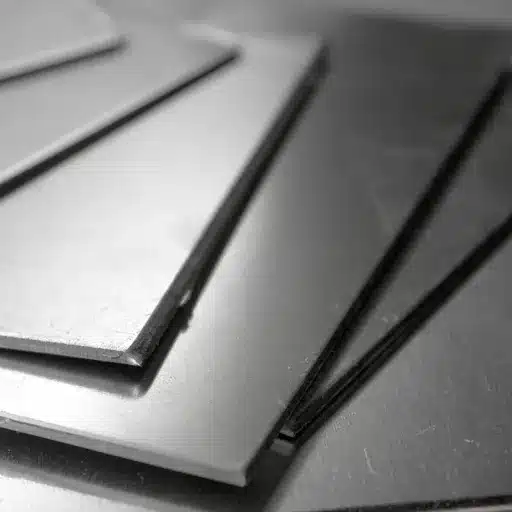
Nickel alloy plates possess amazing properties such as great strength, resistance to corrosion, and tolerating extreme temperatures that make them very suitable for harsh environments like chemical processing plants, aerospace, and marine applications. Their special features make industrial projects more efficient, durable, and reliable.
What Nickel Alloy Plate is Made of?
Nickel alloy plates are basically sheets of metals made up of nickel mainly, along with the other elements such as chromium, iron, molybdenum, and cobalt which are added in small amounts to improve certain characteristics. These types of plates are used in the most difficult environments by providing intense strength, high resistance to corrosion, and high-temperature operation. Nickel composites are found in various industries like aerospace, marine engineering, chemical processing, power generation, and oil and gas because of their remarkable properties.
Key Properties: Nickel alloy plates have fantastic mechanical properties even at extremely high temperatures, they still maintain their strength and integrity. The maximum temperature they can withstand is 1000°F (537°C). Also, oxidation and scaling are two processes that nickel plates resist and for that reason, they are considered for high-heat applications. For example, Inconel 625 and Hastelloy C276, two of the most popular nickel-based alloys, are recognized for their outstanding resistance to corrosion during harsh conditions, which include exposure to acids and seawater.
Realizing Nickel Plate Thickness and Gauges
In order to determine which nickel plating to use in an industrial setting, knowledge about the thickness and gauge standards is essential for performance and durability to be optimal. Thickness of the nickel plate goes from 1 to 100 microns, this range is based on the application. For decorative purposes, which is the commonly applied case with a few microns (1-5), nickel plating is not only very thin but provides very little resistance to corrosion. In aerospace and marine environments where high wear resistance is needed, coatings greater than 25 microns are preferred.
Thickness of the nickel plate is often linked with specific gauge measurements, although the gauge can differ by industry standards. For example, according to the American Wire Gauge (AWG) system, the thickness is inversely proportional to the gauge number — higher gauge numbers indicate thinner layers and lower gauge numbers signify thicker coatings. Furthermore, engineering standards like ASTM B689 offer guidelines for electroplated nickel coatings, which are based on thickness classes suitable for different industrial applications.
Nickel Alloy Plates Applications
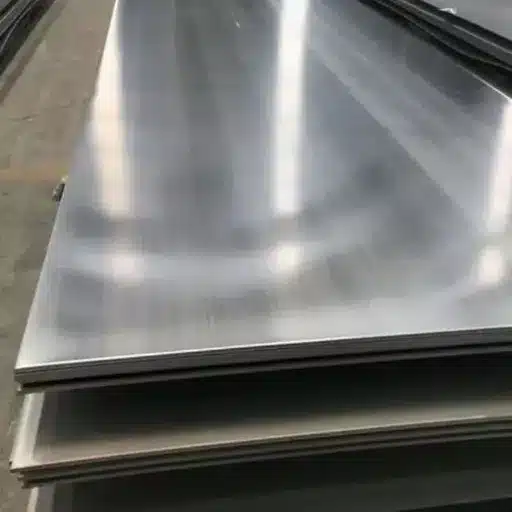
The nickel alloy plates are non-corrosive, high tensile and long lasting materials which the industries have been using in a wide range of applications. I would mention the aerospace, chemical processing, marine engineering, and power generation industries as the most frequent users of the materials, where they perform the most important tasks of protecting equipment from the most severe conditions and prolonging their life.
Nickel Plates Uses by Industry
1
Aerospace Industry
Nickel alloy plates are extensively used in the aerospace sector for parts that are subjected to very high temperatures and pressure. Nickel 718 and other similar alloys such as INCONEL are commonly used to make some of the toughest parts in the jet engines like the turbine blades, exhaust systems and the main components of the engine. Recent studies indicate that the amount of nickel-based materials used in the manufacture of new generation aircraft engines is more than 50% because of the material’s ability to retain its strength at very high temperatures of around 1,700°F (927°C).
2
Chemical and Petrochemical Industry
Nickel plates are very important in the chemical industry as they are commonly used to make reactors, heat exchangers and storage tanks for very corrosive environments that involve acids or saline solutions. Hastelloy and Monel are such nickels that get their popularity through their aggressive chemical resistance. According to research, the life of equipment that is made of these alloys is 20-30% longer compared to the life of equipment made from conventional materials.
3
Marine and Offshore Industries
Nickel plates are extensively used in shipbuilding, desalination plants, and offshore drilling rigs to enhance their resistance against pitting and crevice corrosion. The International Maritime Organization reports that nickel-based alloys in critical marine components significantly reduce the cost of maintenance and prolong service life even in salty conditions.
Corrosion Resistance in Harsh Environments
Nickel alloys are famous for their very good corrosion resistance, particularly in the case of high temperature, high pressure, or aggressive chemicals. The oil and gas, chemical processing, and marine engineering industries have a lot of reliance on these materials to ensure safety and durability. For example, Alloy 625 and Alloy C-276 are popular in subsea and offshore applications because they can resist both pitting and crevice corrosion in saline and acidic environments.
Market Insight: The global market for corrosion-resistant alloys is expected to grow at a compound annual growth rate (CAGR) of 6.2% from $9.5 billion in 2028. This trend is a clear indication of how the industry is progressively shifting towards the use of high-quality materials that can endure the most extreme industrial conditions. Not only that, but nickel’s natural characteristic of forming a protective oxide layer is the reason it is the most favored material for heat exchangers, pressure vessels, and storage tanks in corrosive environments.
Nickel Alloy Plates Benefits
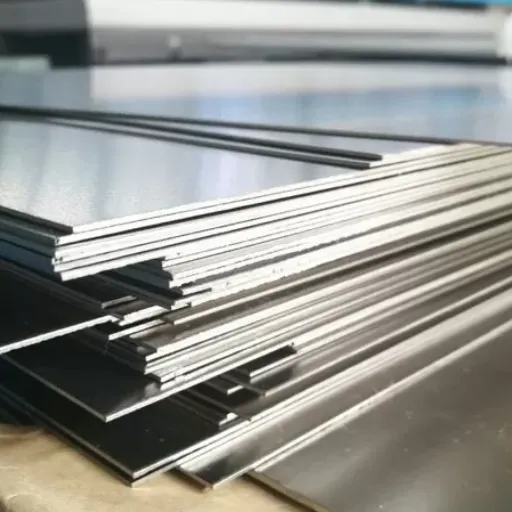
Nickel alloy plates boast astonishingly high corrosion resistance, strength, and life span, and, thereby, are no doubt suitable for extremely tough conditions. Moreover, under turbulent and high temperature and pressure conditions, these alloys keep on being my preferred choice for industrial applications like heat exchangers and pressure vessels.
Resistance and Toughness of Nickel Alloys Compared to Others
Nickel alloys are very clearly characterized by their remarkable resistance to wear and tear and long life, hence they are widely used in the manufacturing of alloy plates that are also the strongest of all materials like carbon steels and non-ferrous metals. If compared to regular stainless steel, nickel-based alloys are strong enough to stay stable even after being subjected to high temperatures and pressures. For example, some of the nickel-containing alloys like INCONEL® can withstand operating temperatures as high as over 1,000°F (538°C) and still retain their structural properties. Their tensile strength is really impressive; depending on the alloy composition, it varies between 80,000 to 150,000 psi (552 to 1,034 MPa), which is higher than that of many other materials.
Cost Efficiency: Another remarkable benefit of nickel alloys is their fatigue and wear resistance. Nickel alloys are used in chemical, aerospace, and marine industries, which are difficult and costly to rebuild or even to shut down for a while due to their corrosive nature or harsh conditions. Thus, by virtue of their work-hardening traits, nickel alloys can be found in the periodic table as the most durable metals, showing around 40% less replacement and downtime costs compared to traditional ones, sulfides, carbides, and others; they only put up with softening during the service life.
Alloy Plates with Pure Nickel Benefits
The pure nickel use in alloy plates production due to its property versatility and hold of benefits in industrial applications gives the pure nickel a vital role in the manufacturer of alloy plates. To start with, pure nickel has got superb corrosion resistance, especially in spite of being in very harsh conditions with extremely acidic or alkaline surroundings. According to recent research, pure nickel retains its oxidation resistance even when the temperature is very high, thus the use of nickel in heat exchangers, chemical processing equipment, and marine applications is justified.
Moreover, pure nickel aids in the development of alloy plates with improved ductility, and thermal conductivity. These properties make the material suitable for mechanical stress where the performance of materials can be affected by their ability to deform or accommodate changes in temperature. One of the most notable examples is that INCONEL®625, a nickel alloy, finds application in aerospace propulsion systems and nuclear reactors where, despite the harsh and high-temperature environments, it successfully retains mechanical strength.
Inventory and Sourcing of Nickel Alloy Plates
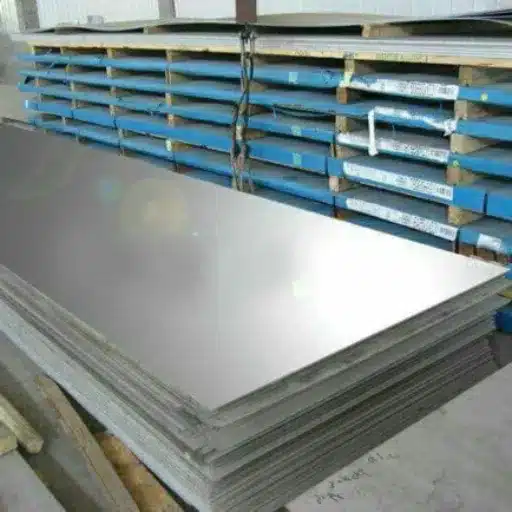
My strategy of sourcing and ensuring the inventory of nickel alloy plates revolves around building relationships with trusted suppliers and having a solid supply chain. By giving importance to quality certifications and regulating stock levels, I will always be able to supply the high-performance materials required for mission-critical applications.
Understanding the Market for Nickel Alloy Inventory
The market for nickel alloy inventory is experiencing a consistent growth trend due to the broad application of nickel alloys in different industries like aerospace, chemical processing, energy, and marine. The ability of nickel alloys to resist corrosion, high thermal stability, and mechanical strength also contributes to their being essential in high-temperature and harsh environments.
Market Growth: Recent market surveys indicate that the global nickel alloy market was worth about $16 billion in 2022 and is expected to grow at a CAGR of 3.8% between 2023 and 2030. The growth is considerably supported by the rising investments in the renewable energy projects, such as wind and solar power, where nickel alloys are used in the production of parts that can endure environmental conditions at their extreme. Besides, the aviation industry keeps on using nickel alloys for their engine parts and turbine blades, thus reinforcing the need for a dependable inventory.
How to Choose the Right Nickel Alloy Plate Supplier
Product Quality and Certification
Select suppliers offering nickel alloy plates of superior quality backed by certifications such as ISO 9001 or AS9100. Confirmed quality standards guarantee that materials are appropriate for their intended use in the industry, especially in the case of the demanding sectors of aerospace and healthcare. For example, nickel alloys intended for aerospace applications must comply with very strict specifications such as ASTM B443 for alloy 625.
Material Diversity and Specialization
Suppliers stocking a comprehensive range of nickel alloys i.e., Alloy 200, Alloy 625, and Alloy 718 are more likely to address the needs of different applications. Check the supplier’s familiarity with specific alloys that match your project needs. For instance, nickel alloy plates with high corrosion resistance are suitable for marine and chemical processing industries.
Custom Cutting and Processing Services
Choose suppliers who are well-equipped in processing with techniques like waterjet cutting, laser cutting, and heat treatment. On-site processing not only shortens lead times but also guarantees that the materials are supplied in the dimensions or forms specifically suited for the project which is especially important for industries driven by precision.
Global Availability and Logistics Support
Vendors that have an impressive global distribution network can make certain that even the most urgent projects will receive deliveries on time. For example, top suppliers with inventory in critical markets around the world, including North America, Europe, and Asia, will not only be able to cater to the demands around them but also to lower their shipping charges.
Reference Sources
-
Verified Market Reports:
- This source provides comprehensive market insights, including the size, growth, and segmentation of the nickel alloy plate market. It highlights key drivers, challenges, and applications across industries like aerospace, marine, and chemical processing.
- Source Link
-
Stratview Research:
- Stratview Research offers an in-depth analysis of the aerospace nickel alloys market, focusing on applications, market dynamics, and technological advancements. It also discusses the role of nickel alloys in high-performance and high-temperature environments.
- Source Link
-
LinkedIn Articles on Nickel Alloy Plate Market:
- LinkedIn hosts articles that discuss the United States nickel alloy plate market, including its applications, segmentation, and growth trends. These articles are written by industry professionals and market analysts.
- Source Link
Frequently Asked Questions (FAQs)
What is a nickel alloy plate and what are its applications?
A nickel alloy plate is a flat metal sheet that is mostly made out of nickel and alloying elements, thus it has a lot of good qualities like high corrosion resistance and mechanical strength. Although the use of these plates are also in automotive parts, they are mainly chemical and pollution control industries due to the fact that it can serve for a long time under extreme conditions.
How does the weldability of nickel alloy plates compare to other metals?
Nickel alloy plates are classified as having good weldability as compared to a majority of the metals. The addition of nickel makes the welds more fused and stronger, which is why it is used in applications that need strong joints. At the same time, it could happen that specific welding methods and filler materials are needed to ensure the welds remain in good condition, particularly in case of thick sections.
What are the common grades of nickel alloy plates?
Nickel alloy plates are produced in different grades, like Inconel, Monel, and Hastelloy which are the most common. Each grade has different characteristics suitable for certain applications. For example, Inconel can withstand very high temperatures and is still strong while Monel is not easily attacked by seawater even though it is made of a metal alloy. Choosing a grade is based on technical requirements including especially the exposure condition and the needed mechanical properties.
What factors should be considered when selecting nickel alloy plates for industrial applications?
In the process of selecting nickel alloy plates for industrial applications, factors such as corrosion resistance, strength, thickness, and formability should all be taken into consideration. Moreover, the requirements of the application, such as the maximum temperature and pressure conditions, the shape and dimensions, are important as well and play a vital role in the selection process.
Can nickel alloy plates be used in the manufacturing of pumps and valves?
Definitely, nickel alloy plates are used in the production of pumps and valves as one of their main ingredient. The reason for this is due to their excellent corrosion resistance and also being strong, the properties of nickel alloy plates make them a favored material in the pump and valve industry. For instance, the components that are in contact with aggressive fluids or in harsh environments are made of nickel alloy plates or equivalent materials thus their integrity is preserved.

